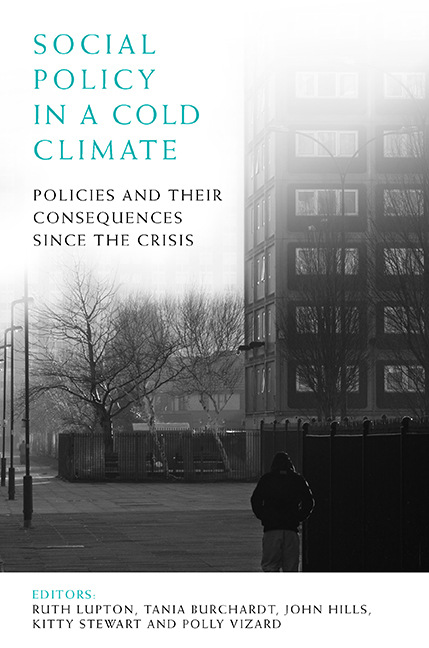Six - Employment policy since the crisis
Published online by Cambridge University Press: 01 September 2022
Summary
The situation on the eve of the crisis
On the eve of the financial crisis, the labour market, from an historical perspective, was in good shape. Employment rates were high and had been increasing for some time; largely due to increases in employment rates among women. The labour market had not been hit by a major economic recession since the early 1990s.
New Labour had pursued supply-side policies to meet their ambition of achieving ‘employment opportunity for all’ (their ‘modern definition of full employment’). These were centred round extensive active labour market programmes (ALMPs) (New Deals) designed to increase activation among unemployment benefit recipients and increasingly for groups claiming other out-of-work benefits (lone parents and people with limiting longstanding illnesses or disabilities) who had previously not been required to search for work as a condition of benefit receipt nor given access to ALMPs. Activation programmes were complemented by a number of policies designed to ‘make work pay’ and to increase financial incentives to take up lowpaid job opportunities (the National Minimum Wage, in-work cash benefits, lower taxes for low-paid workers).
The working-age population had historically high levels of educational attainment, and despite a large expansion in higher education, the graduate wage premium had held up well. This had continued to provide incentives for young people to gain a degree, even though the costs of doing so rose with the introduction of annual top-up tuition fees. The introduction of a National Minimum Wage in 1999 led to the (legal) eradication of extreme low pay, but low wage jobs on the eve of the financial crisis accounted for a larger share of employment than in most OECD countries. Real average wages had been growing for some time, but overall earnings inequality remained high in the UK.
Despite reasons to be optimistic about the labour market, some fault lines were evident. Youth unemployment and unemployment among young adults more generally started increasing in the early to mid-2000s (McKnight, 2009). The Labour government's reforms to ALMPs (greater activation alongside increased conditionality) contributed to increasing employment rates among lone parents (Gregg and Harkness, 2003), although targets had been missed, but unemployment and inactivity rates remained high among long-term sick and disabled people.
- Type
- Chapter
- Information
- Social Policy in a Cold ClimatePolicies and their Consequences since the Crisis, pp. 103 - 124Publisher: Bristol University PressPrint publication year: 2016

